Distance between sewer wells
An important role in the sewer system perform wells. This is a necessary structure, without which the system will not function properly, or even completely clogged. Sewer wells are not arbitrarily located on the highway, but have their place. And each of them does his job. The number of installation wells depends on the length of the route, turns, drops, as well as the diameter of sewer pipes. In the existing SNiP document, the device, purpose, and the distance between sewer manholes are clearly indicated. Let's take a closer look at all types of sewer manholes, their purpose and places of their installation.
Sewer manholes
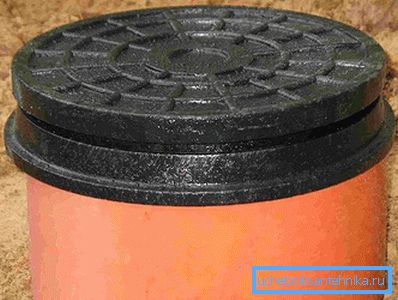
This type of wells serves to inspect and control the sewer system. They also clean the pipeline when clogged. Inspection shafts are installed on a straight pipeline of great length, turns, at the points of connection of the side sleeves, as well as at the point of changing the diameter of the pipe or its slope. The distance between the installed wells for pipes of different diameters is calculated according to the SNiP document. On a straight track with a pipe diameter of 150 mm, the distance between the wells should be 35 m. For pipes from 200 mm to 450 mm, the distance will be 50 m. Large pipe diameters, probably, it makes no sense to list further. They are mainly used in central sewer systems, with a large volume of wastewater. As you understand, with an increase in the diameter of the pipe, the distance between the manholes increases. This is due to the fact that a pipe with a larger diameter is less likely to clog. There are cases when the distance can be increased up to 50 meters on a flat track with the same pipe diameter and without side sleeves. In everyday life in the suburban areas and private yards for the device of sewage use PVC pipes with a diameter of 110 mm. On such networks, the distance between the wells can be reduced to 15 meters.
Rotary sewer wells
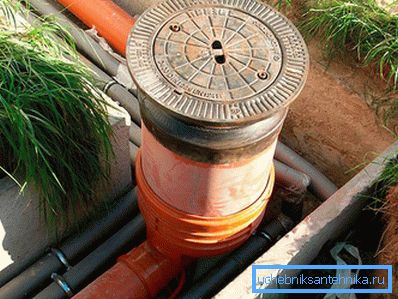
This type of well performs the same functions as the viewing well. Has the same device. And acquired its name due to the fact that it is installed at the turn of the track. Every turn or bend in the pipeline can become a place of congestion. In order to have access to cleaning this section of the sewage system, wells are installed on all turns and bends. If the straight-line distance between the rotary wells is large, then additional inspection wells are installed in this area.
Dropping sewer wells
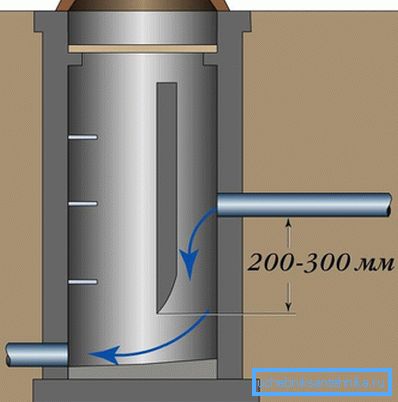
This type of well is installed in problem areas of the sewage system, where it is impossible to maintain the correct slope of the pipeline. Take, for example, a large slope. In such a place the correct slope of the pipeline cannot be maintained. And this entails a rapid discharge of wastewater, which will not have time to take with them solid accumulations, and the pipe will eventually clog. Therefore, in such places, drop wells are installed on a stepped system. The distance between such wells is determined individually and depends on the slope, but the difference should not be more than 3 m. If the sewer has a pipe diameter of up to 600 mm and the drop is less than 50 cm, it is possible to replace the differential well with an inspection well equipped with a drain.
Final well
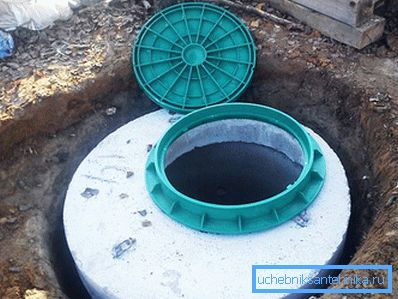
At the end of the sewer system, a so-called end well is necessarily installed. This is the place where all wastewater from the sewage is discharged. It can be both filtering and cumulative. But the point is that before this well or before the tie-in into the city highway, a control well is installed at a distance of 1.5 m.
Distance from building
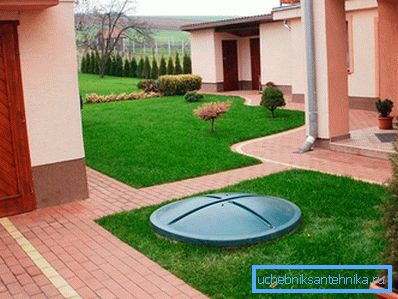
At the exit of the sewer system building, the first well is necessarily installed. According to the norms, it should be located not less than 3 m from the wall of the building in the direction of flow, but not more than 12 m. Basically, the length of the release of the manhole from the wall of the building should not be more than 8 m. If this distance cannot be maintained, then an additional well.
When building a sewage system, keeping the distance between wells, do not neglect sanitary norms. Remember that in addition to the correct distance between them, the distance of the well from the reservoir, drinking source, and garden plantings must be maintained. The distance to the water well depends on the material of the pipe from which the water supply is made. But in any case, not less than 5 m. If it is a drain well, then it is located not less than 10 m from the aqueduct.
As you understand, any sewage system built according to all the rules and regulations requires cleaning and maintenance over time. Therefore, so that you do not have to open the entire network when the pipes are clogged, install the wells correctly. Having sustained all distances according to the established norms, you can always reach the problem section of the pipeline and perform an audit.